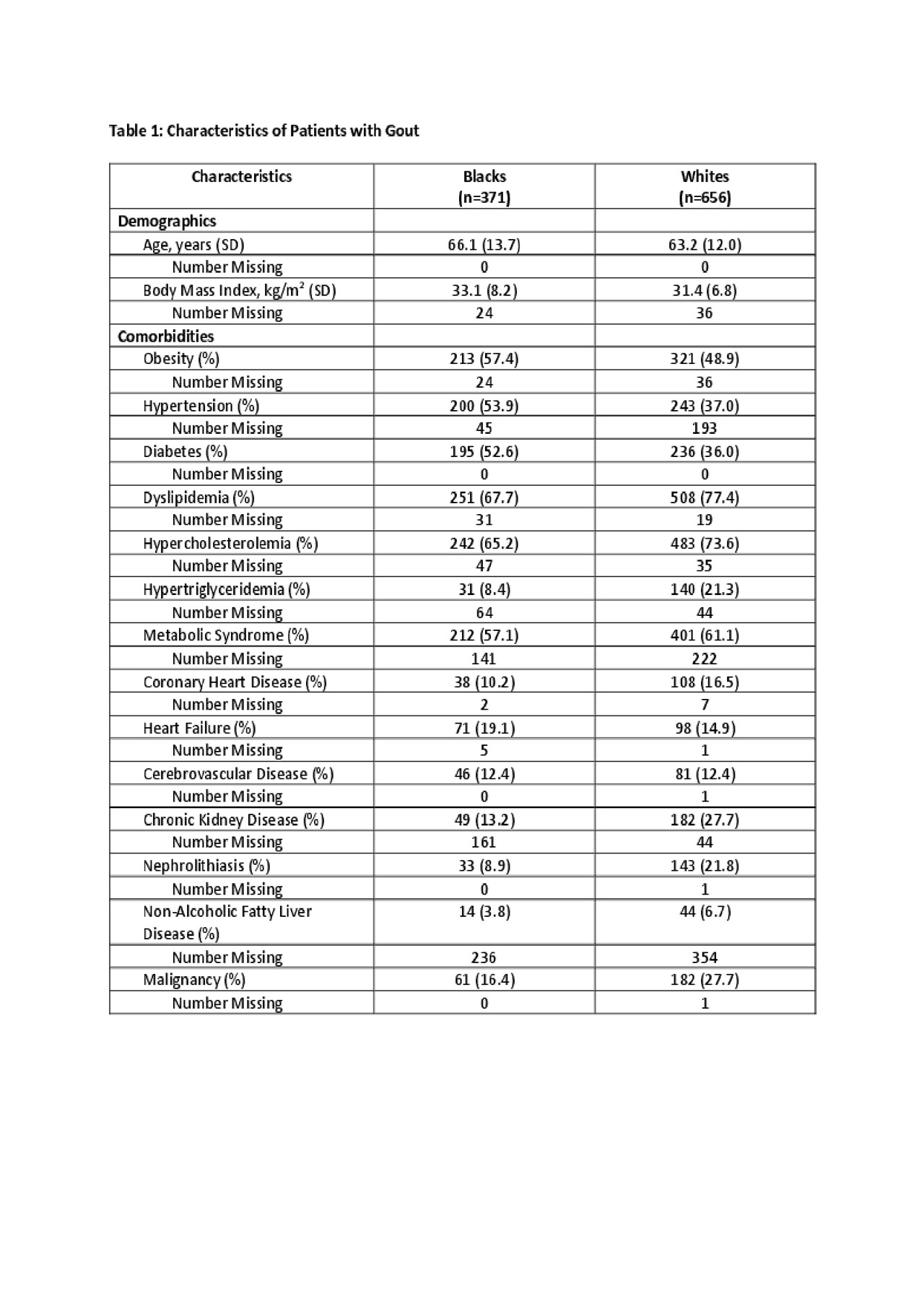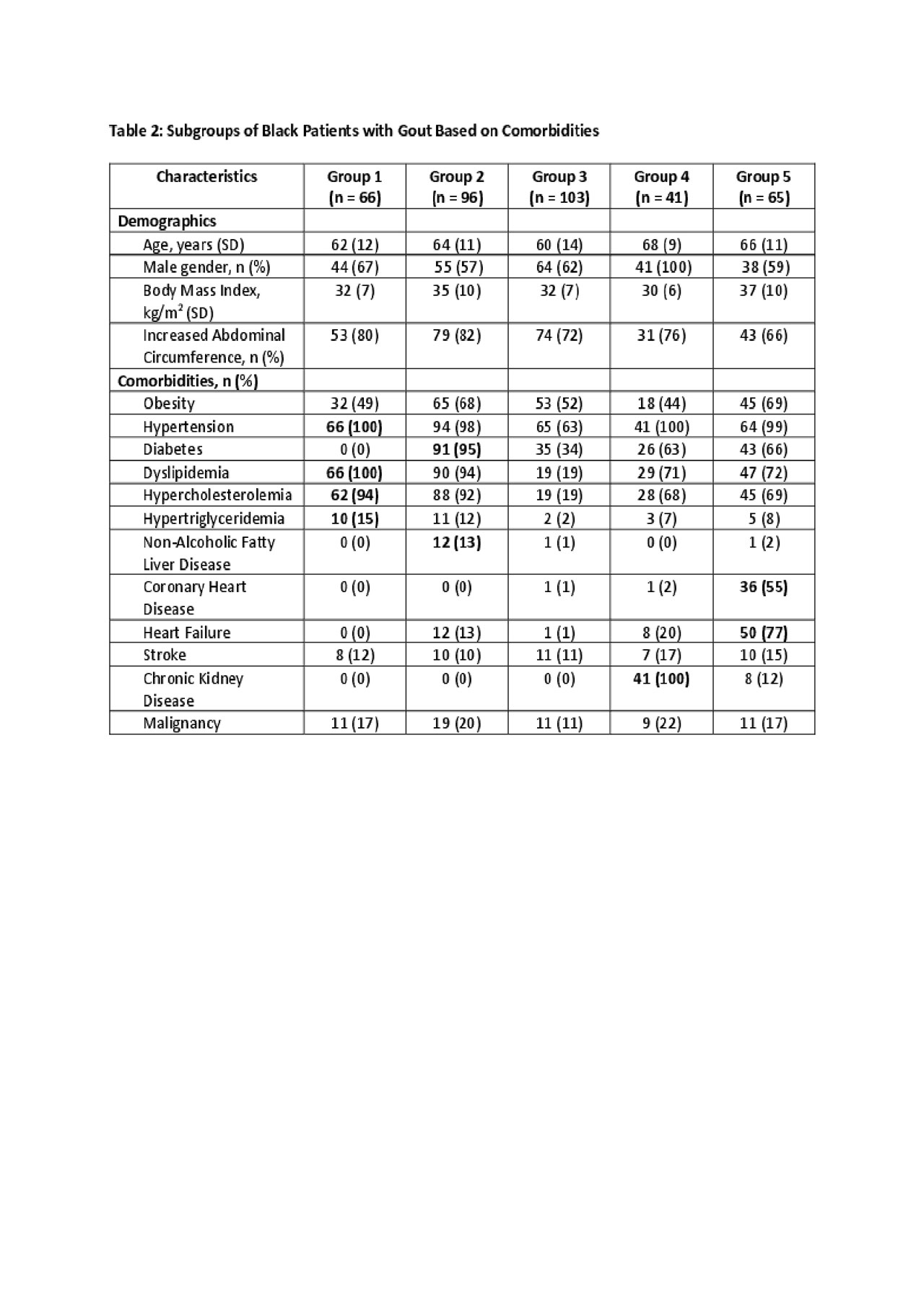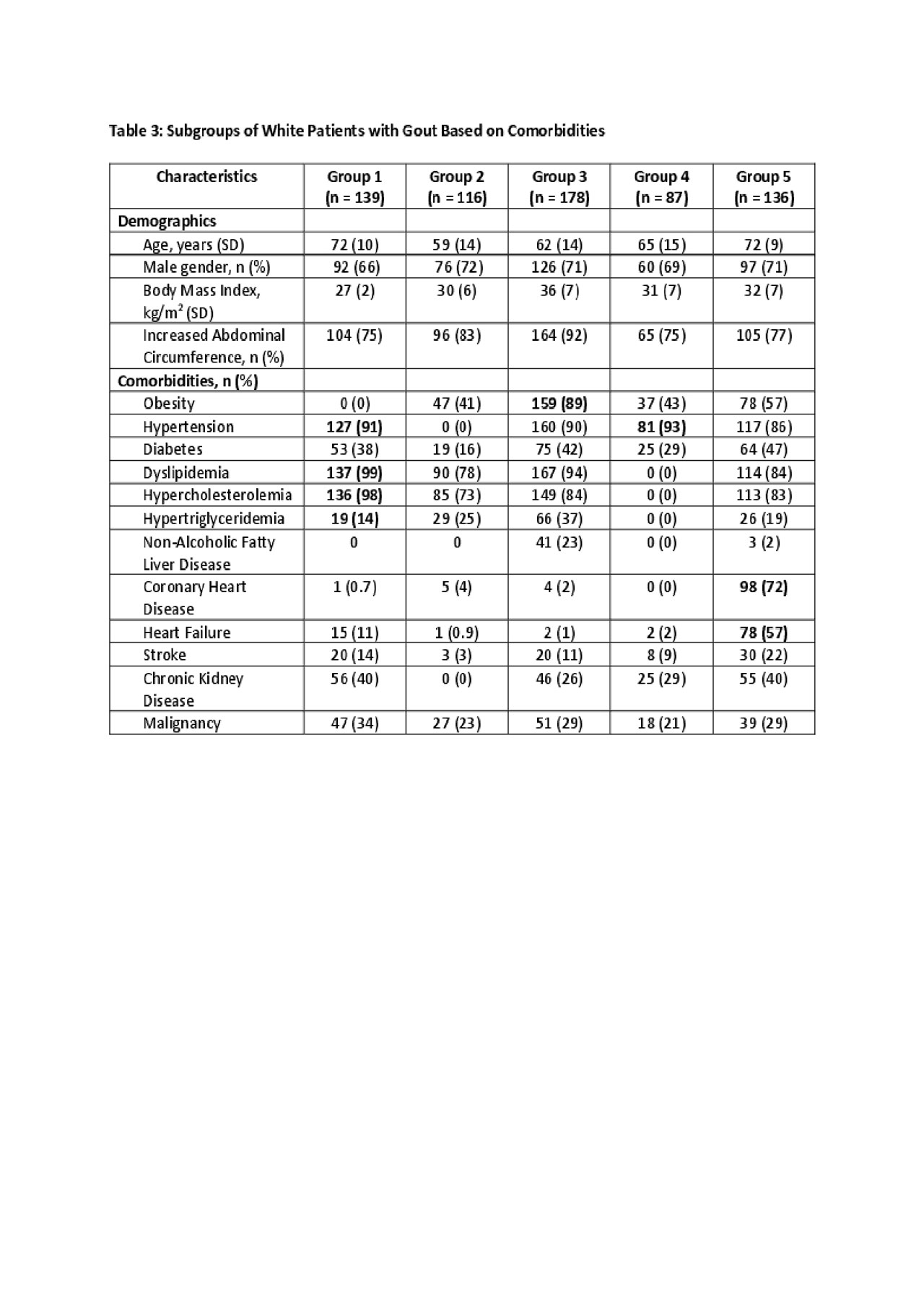Session Information
Session Type: Poster Session (Sunday)
Session Time: 9:00AM-11:00AM
Background/Purpose: Gout is a very prevalent condition associated with many metabolic and cardiorenal comorbidities. A few studies have investigated the comorbidity subtypes of gout patients by cluster analyses; however, such analyses have not yet been performed among Blacks nor confirmed in a general population cohort. As such the generalizability of these findings remains unknown. Thus, our objective was to identify gout subtypes based on comorbidities using cluster analysis among Black adults with gout in the US general population. Furthermore, we sought to compare these findings to that of White adults with gout.
Methods: We used data from 371 Black and 656 White participants in the 2007-2016 cycle of the National Health and Nutrition Examination Survey (NHANES), a nationally representative sample of adults in the US with detailed clinical and physical examination data. Diagnosis of gout was based on survey of physician- or health professional-diagnosed gout. We employed Ward’s minimum variance method of clustering to group patients with gout into clusters (i.e., subtypes) based on distinct comorbidity patterns according to 8 variables: obesity, hypertension, diabetes, dyslipidemia (i.e., hypercholesterolemia and/or hypertriglyceridemia), coronary heart disease (CHD), heart failure (HF), chronic kidney disease (CKD), and non-alcoholic fatty liver disease (NAFLD).
Results: Metabolic and cardiorenal comorbidities were prevalent among both Black and White participants with gout (Table 1). Cluster analysis identified 5 comorbidity subgroups among Black patients with gout (Table 2). All patients in Group 1 had dyslipidemia and hypertension. Group 2 had the highest proportion of patients with diabetes (95%), and nearly all patients with NAFLD belonged to this group. Group 3 consisted of patients with gout but few other comorbidities. All patients in Group 4 had CKD. Group 5 had the highest proportion of patients with CHD and HF. Cluster analysis among Whites also identified subgroups with isolated gout (Group 2) and dyslipidemia and hypertension (Group 1) (Table 3). It also identified a subgroup that combined cardiac and renal disease (Group 5). Key differences among Whites was the presence of obese (Group 3) and hypertension only (Group 4) clusters, and the lack of a diabetes group. The higher prevalence of obesity in Blacks and the smaller number of Black participants likely contributed to these differences.
Conclusion: These findings from a nationally representative sample of Black US adults identified 5 subgroups of gout based on comorbidities: dyslipidemia/HTN, diabetes, isolated gout, CKD, and heart disease. Notable differences from the European population and American White cohorts included the separation of CKD and cardiac disease and the absence of a group defined by obesity among US Blacks. Overall, these subgroups could be broadly classified as i) isolated gout, ii) dyslipidemia/hypertension, iii) obese or diabetes, and iv) cardiorenal disease (separately or together). These subgroups may shed light on pathophysiologic mechanisms that contribute to gout and have implications for personalized interventions to reduce the burden of gout and its comorbidities.

ACR 2019 NHANES Cluster Table 1

ACR 2019 NHANES Cluster Table 2

ACR 2019 NHANES Cluster Table 3
To cite this abstract in AMA style:
Yokose C, Lu N, Chen-Xu M, McCormick N, Pillinger M, Zhang Y, Choi H. Subtypes of Gout Based on Comorbidity Patterns Among Black Patients in the US General Population – Cluster Analysis of the National Health and Nutrition Examination Survey 2007-2016 [abstract]. Arthritis Rheumatol. 2019; 71 (suppl 10). https://acrabstracts.org/abstract/subtypes-of-gout-based-on-comorbidity-patterns-among-black-patients-in-the-us-general-population-cluster-analysis-of-the-national-health-and-nutrition-examination-survey-2007-2016/. Accessed .« Back to 2019 ACR/ARP Annual Meeting
ACR Meeting Abstracts - https://acrabstracts.org/abstract/subtypes-of-gout-based-on-comorbidity-patterns-among-black-patients-in-the-us-general-population-cluster-analysis-of-the-national-health-and-nutrition-examination-survey-2007-2016/
